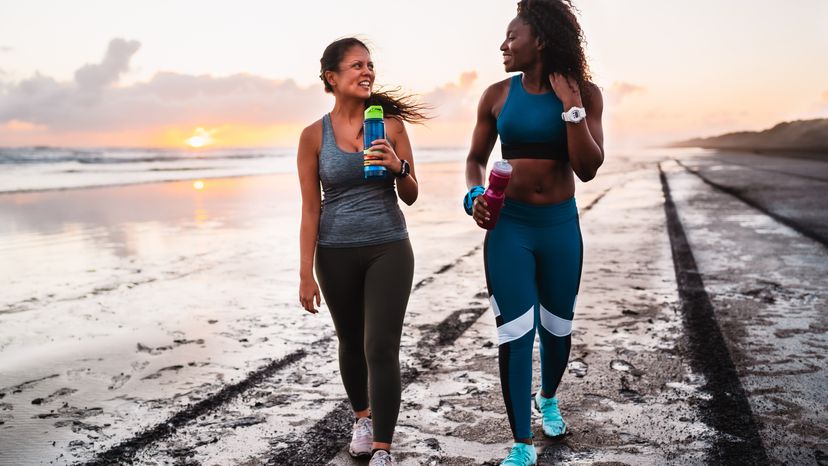Learning how to find the best walking shoes is not as simple as it used to be. As walking has gained popularity as a form of exercise, a wide variety of shoes meant specifically for walking has appeared on the market. The unique designs and features of many of these shoes have evolved from research into the mechanics of walking.
This research has shown that the stresses put on the feet in walking are different from those exerted in other exercises such as jogging, tennis, and aerobics. If you walk, it makes good sense to select shoes designed specifically with walking in mind.
When you shop for walking shoes, keep in mind that the basic shape of the shoe should conform to the shape of your foot, and the toe box (the area around your toes) should be high enough, wide enough, and long enough to accommodate your toes comfortably. But the fit isn't the only factor to consider.
You'll want to find shoes that cushion and support your feet as they hit the ground with each step. Shoe design, however, often involves a trade-off between cushioning and stability.
A well-cushioned shoe may not control the foot's motion adequately. An extremely rigid shoe, on the other hand, may not provide the shock absorption and flexibility necessary for comfort.
If you have had stress fractures, joint problems, or back pain in the past, you may want to opt for a shoe that stresses cushioning over stability. You'll want a shoe that has a well-cushioned insole (the shock-absorbing lining inside the shoe upon which your foot rests) and midsole (the part of the sole between the insole and the very bottom of the shoe).
If, however, your foot tends to roll inward (pronate) as you walk, you may want to pick a pair of shoes that stresses stability. If you don't know whether you pronate or not, take a look at your other shoes. If the outer side of the heel and the inner side of the forefoot (under the big toe joint) show a great deal more wear than the rest of the sole, chances are that you pronate excessively.
Most people pronate to some extent, but the more your feet tend to roll inward as they hit the ground, the more support you'll need to prevent problems. So look for a more rigid shoe with a sturdy heel counter (the back of the shoe that wraps around your heel).
To test the firmness of the heel counter of a shoe, try squeezing it. If it collapses, choose a different shoe.
To get the best of both worlds, look for a shoe with a midsole that contains two or three materials of different density (called dual- or triple-density midsoles). In these shoes, the softer, less dense materials cushion the feet while the firmer, denser materials stabilize them and make the shoes more durable.
You may also want to try a shoe that has a heel cup (a padded, cuplike area inside the back of the shoe that cushions the heel and holds it in place).
The sole of the shoe should be flexible at the ball of the foot. If you can bend the shoe in the middle (below the arch support), however, you won't get enough arch support and your feet may tire easily.
The outsole (the very bottom of the sole that comes in contact with the ground) should be made of a durable, springy material like rubber yet should be soft enough so that if you press your fingernail into it, you can see a slight indentation. The outsole should also be patterned to provide traction.
Instead of the flat-bottomed sole found in running shoes, some walking shoes feature a distinct heel. This type of walking shoe may be a good choice for people who are prone to developing aching arches, midfoot pain (plantar fasciitis), and heel spurs.
Some walking shoes have a "rocker" sole -- that is, they are thicker under the ball of the foot than are other types of athletic shoes, and they curve upward in front. This design helps support the foot as the body's weight is transferred from the heel to the toe.
The uppers (the part of the shoe above the sole that covers the feet) should be made of soft material that "breathes," allowing sweat to evaporate. Leather, or a combination of leather and nylon, is a good choice.
The uppers should have a padded heel collar (the part of the upper surrounding the opening of the shoe) and tongue. Some shoes feature a notched heel collar that helps prevent irritation of the Achilles tendon.
Go to the next section to learn even more about selecting the best walking shoes.
To learn more about walking, see:
